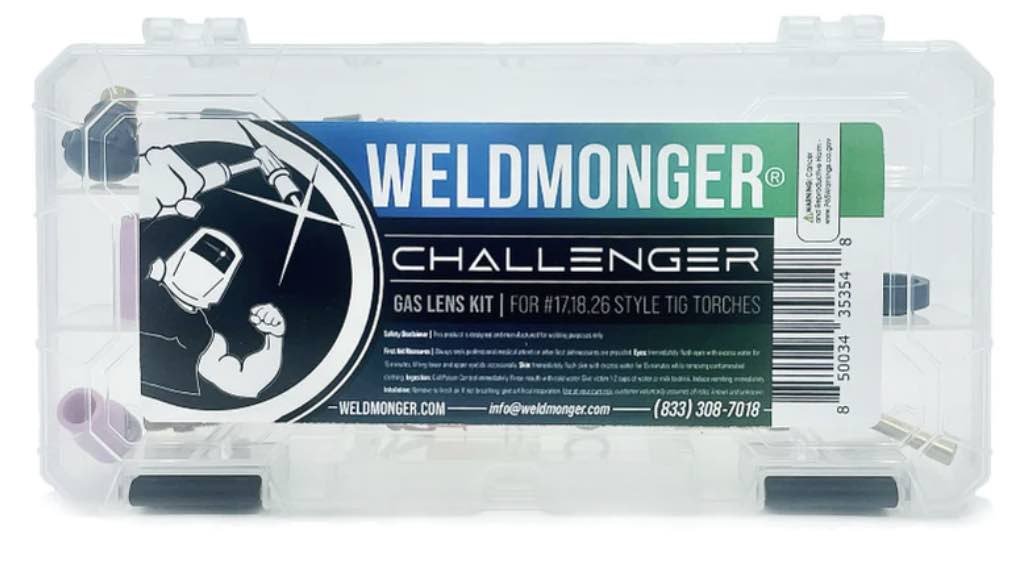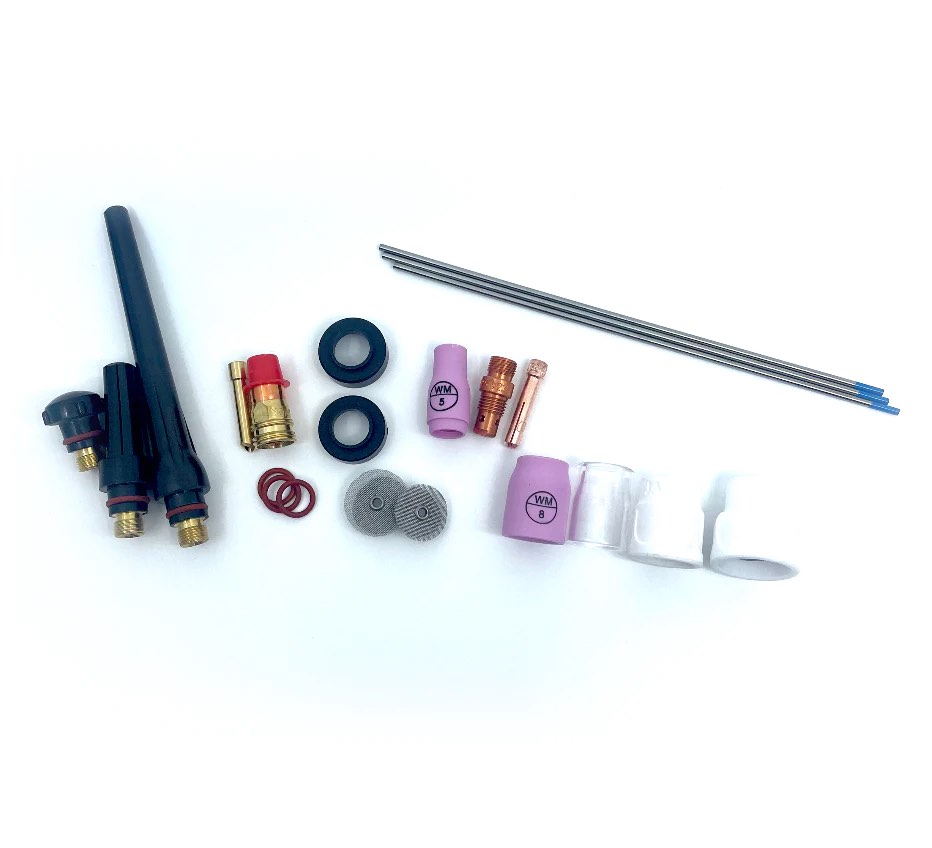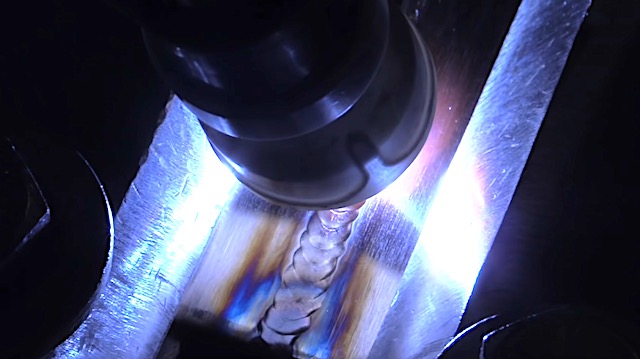Tig Welding Techniques for Stainless Steel
Today, I had a chance to show 2 different tig welding techniques for welding stainless steel..both used on one stainless part I did a few weeks ago.
I was busy making part of a cart out of square tubing and before I could finish the job, a "Slider" job slid into the shop.
...Introducing the New WeldMonger Challenger TIG kit that includes the most frequently used Cups.
A Slider job is one that slides ahead of all the rest in priority.
No matter what else is going on, the Slider takes priority.
It could be a good customer who is in a jam and you need to bail him out to build a better business relationship, it might be a misdrilled hole for a job that needs to be delivered yesterday, or it could be the water bottling plant down the street whose machine just quit due to a broken part that is unavailable...and they are willing pay anything to get the part fixed right now.
Like people, all jobs are important, but some are "hotter' than others.
This part was a simple bracket that attached to a small conveyer part. Lots of machining, but very little welding.
It was made from stainless steel bar stock and flat bar and all the angles were already machined so all I had to do was assemble the part and weld it.
Easy right?
Well actually yes. Especially since I have this sweet precision welding table and tooling.
I have never regretted getting this table and tooling.
Someone asked on one of my YouTube Videos.... "how much did that table set you back?" and Keith Fenner from Turn Wright Machine Works commented " tools like that dont set you back...they set you forward."
Keith has a way with words...and metal.
Anyway, I tack welded without filler metal and welded the pieces using 2 different tig welding techniques:
The dip technique where the filler metal is dipped in and out of the puddle...
and...
The lay wire technique where the wire is kept in the puddle all the time.
Dipping the wire in and out seems to be the "go to" method for most jobs and is better in some cases because dipping the rod is the only way to really see the leading edge of the puddle.
But sometimes, appearance and color are just as important and sometimes even more important than complete penetration into the root of the joint.
There are situations where lack of distortion, lack of discoloration, and low heat input are the most important things.
Dont misunderstand...I am in no way saying that the strength of the weld is not important. It is very important.
But this job is a good example. The bracket I am welding is made from thick solid bar stock about an inch thick.
It bolts onto a part that is only .125" or 3 mm thick.
The smallest possible weld I could make, would have more than enough strength.
So I was not worried about using the lay wire technique.
The "lay wire" tig welding technique is mostly used for pipe welding but there are other situations where it can be used. When low heat and fast travel speed is important, it can be a good welding technique to use.
These parts are made from solid bar stock. Even though the rest of the assembly, and the brackets it bolted to were only 1/8" thick (3mm) sheet metal . Complete overkill but our job was to make 2 parts as per the sample provided....not re engineer the job.
At the bottom of this page is a video that is a serious, but shameless plug for my Tig Finger. But dont let that deter you from watching it because there are several good tips and techniques in it.
Thats because If you were to look at my DNA strand under a microscope it would look like this...
T..E..A..C..H..E..R.
It seems that inevitably, I try to teach something in every video...even when I am trying to sell something.
Does that mean I am a frustrated wanna be teacher? (just count spelling and grammar errors and you will know I am not) or do I have a big ego and like to hear myself talk? or is it part of who I am after teaching for so many years?
I have no freakin idea.
Maybe its a "do unto others" kinda thing because one thing I do know is that I really appreciate it when someone offers me good and concise information for free.
So that is what I try to do... I know how this old world works... In order to get something, sometimes you have to give something.
So ...I am giving some information along with some good instructive arc shots hoping that you will see exactly how a Tig Finger can help you.
The rest is up to you...Is it worth a few bucks to Tig Weld better? Its up to you to decide.
Tig Welding Techniques and The TIG Finger
click here to learn more
See more Tig Welding Techniques



















